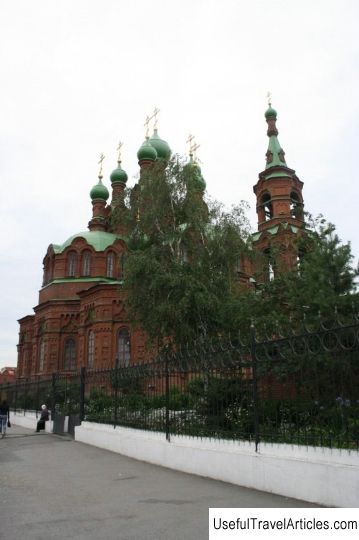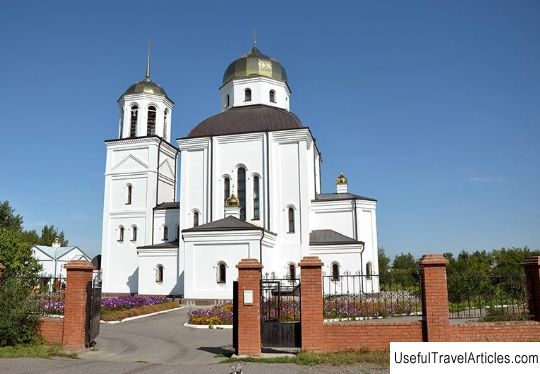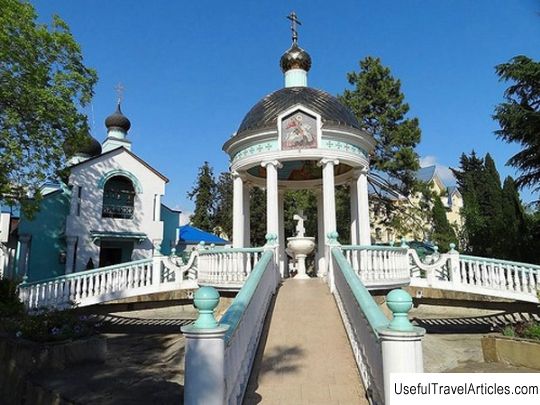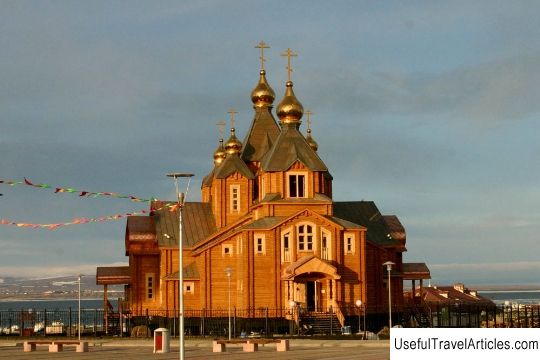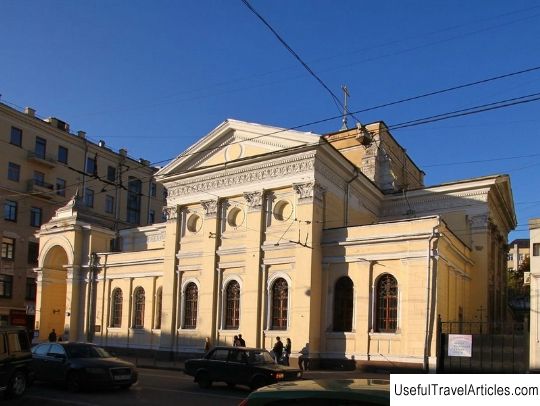Church of the Life-Giving Trinity description and photo - Russia - North-West: Sebezh
Rating: 8,2/10 (790 votes) 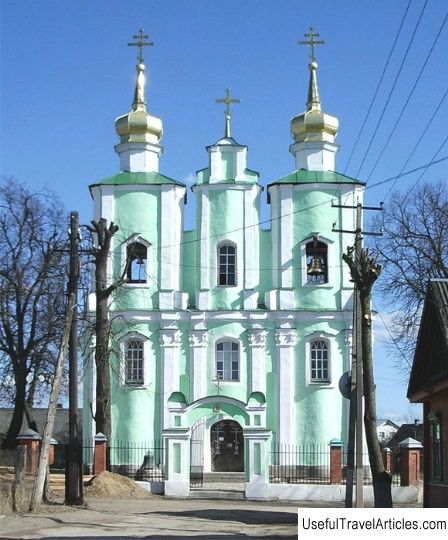
Church of the Life-Giving Trinity description and photos - Russia - North-West: Sebezh. Detailed information about the attraction. Description, photos and a map showing the nearest significant objects. Photo and descriptionOne of the oldest buildings that have survived to this day in the city of Sebezh is the Church of the Life-Giving Holy Trinity. It is located on a small hill and closes the perspective of the previously existing Peter the Great Street in the part that goes directly to the Castle Hill. The Church of the Life-Giving Trinity is a typical example of a provincial church, made in the Baroque style and preserved to this day without any major rebuilding. On the south side of the church itself, passing through a small square, which was previously called Torgovaya, is the priest's house, which is a 19th century building (today this building belongs to the building of the military enlistment office). It should be noted that the Church of the Life-Giving Trinity has a rather long and interesting history. In the spring of March 20, 1625, according to the decree of the Polish king Sigismund, a wooden church was laid in the area where the Basilian nunnery was located at that time. In the middle of 1649, a well-known magnate named Jerome Radziwill became the count of Sebezh and decided to lay a stone church on the site of a previously operating but soon burnt down wooden church. Until the beginning of 1954, namely at the time when Sebezh passed to the Moscow State, the construction of the church had already been completed, and a consecration ceremony was also held. In the period from 1654 to 1674, it is not known exactly what events happened to the monastery: either it was closed, or it simply ceased to exist and was called Basilian. Most likely, Orthodox services were held in the church. In the middle of 1673, Sebezh again passed to the Polish state. After this event, Mass resumed in the temple. Also at this time, onion-shaped endings appeared on all the towers, as well as over the church altar. During 1772-1804, church services were not held in the church due to the fact that the building was badly dilapidated. In plan, the Church of the Life-Giving Trinity is a one-nave building with a rectangular porch and equipped with a pentahedral apse from the west. The facade on the western side is decorated with two turrets and a pediment. In 1804, the building became a parish church. In difficult times for Russia, namely in 1917, the temple was closed. Many years later, from 1960 to 1970, there was a hostel in the building of the church, after which the church turned into an ordinary food warehouse. In 1985, a massive fire broke out in the warehouse building, due to which the roof almost completely burned out, after which the building was completely abandoned, and it began to gradually collapse. At the end of 1988, the burnt and dilapidated building was transferred to the newly formed Orthodox community. The gradual restoration was carried out with the money of the parishioners, as well as donations from enterprises not only of the city, but also of the region. The following year, Archbishop Eusebius of Velikie Luki and Pskov performed the rite of consecration of the Trinity Cathedral. On the day of the celebration of the 350th anniversary of the city, crosses and domes were covered with gold, and the building was painted a beautiful green color. In the temple, murals were made on the upper parts of all walls, and also installed a church iconostasis. A new personalized bell was consecrated, the weight of which reached about 500 kilograms, which was made in Minsk at the expense of benefactors. Today the Church of the Life-Giving Trinity is active, Orthodox services are held here.     We also recommend reading Polva Peasant Museum (Polva Talurahvamuuseum Karilatsis) description and photos - Estonia: Polva Topic: Church of the Life-Giving Trinity description and photo - Russia - North-West: Sebezh. |
